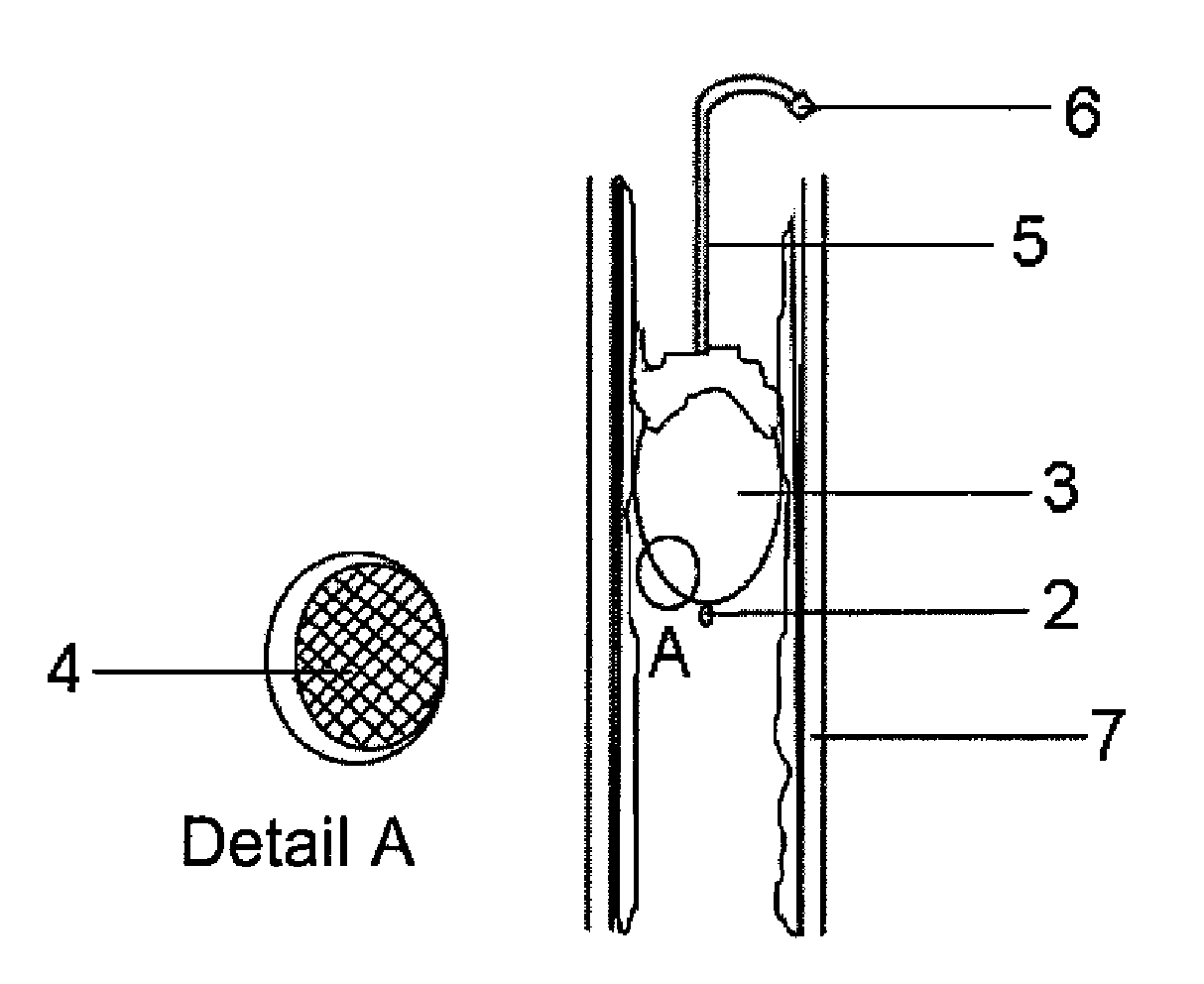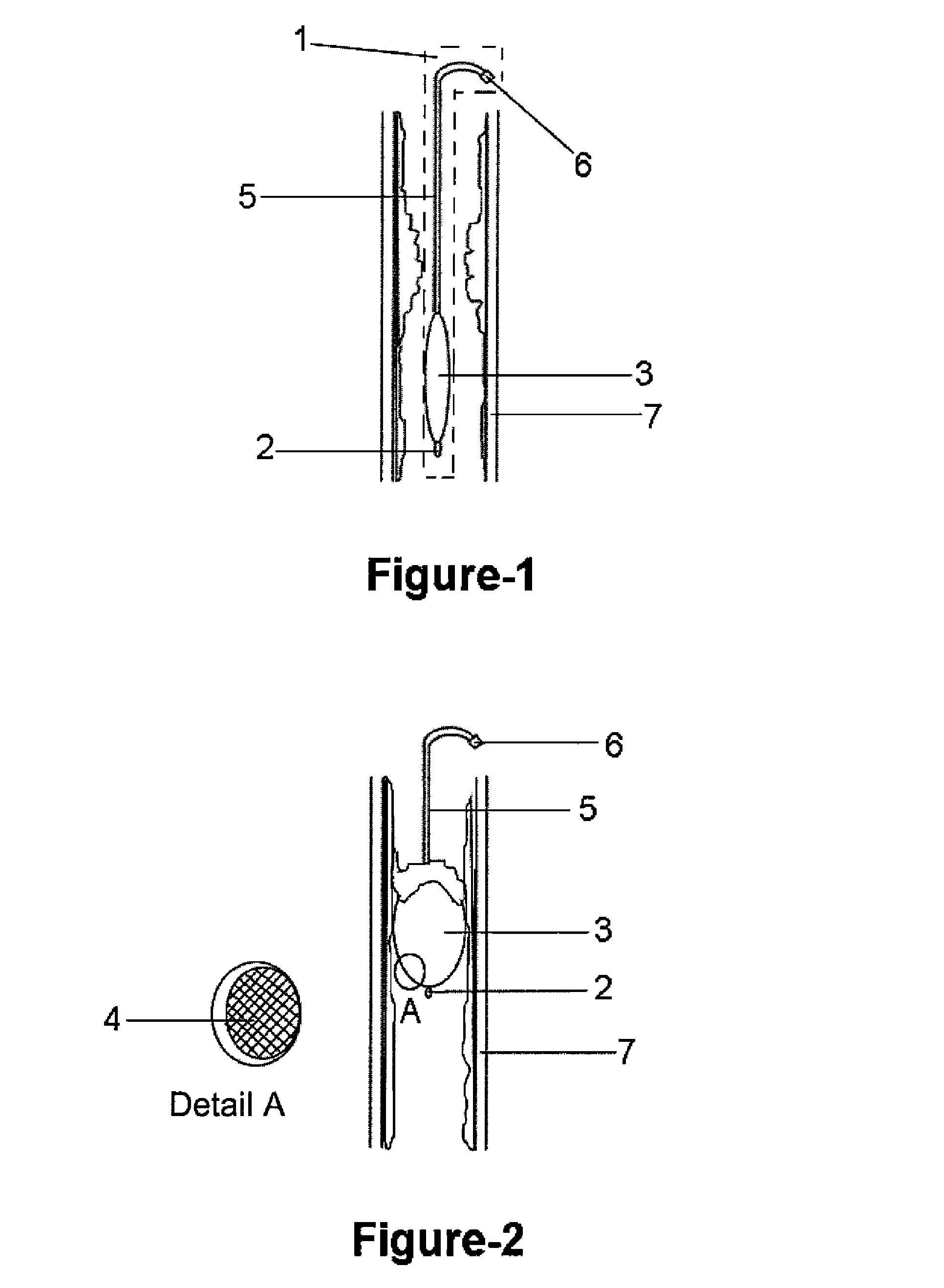Flexible and Rigid Catheter Resector Balloon
a flexible and rigid technology, applied in the field of resector balloons, can solve the problems of patients becoming incurred to treatment methods, which are actually more severe, and oncological therapy methods such as chemotherapy and radiotherapy have quite limited lung benefits, and achieve the effect of widest stent placement, eliminating any occlusion, and reducing complication risks
- Summary
- Abstract
- Description
- Claims
- Application Information
AI Technical Summary
Benefits of technology
Problems solved by technology
Method used
Image
Examples
Embodiment Construction
[0035]The present invention relates to flexible and rigid resector balloons (1) developed for use in treating endoluminal-endobronchial tumoral lesions and endovascular occlusions, encountered in blood vessels and in other hollow tube-like organs (7), such as trachea, windpipe, food pipe, urinary tract, bile ducts.
[0036]Said resector balloon (1) is composed of a resection tip (2) with variable diameter and length; a resection part (3) capable of tissue shaving and resectioning; a catheter section (5) providing access to an endoluminal site, through a bronchoscope or any other endoscope; and an injection terminal (6) to be equipped with an injector, used to inflate said resection part (3) by means of injecting air or fluid thereto.
[0037]FIG. 1 illustrates the present resector balloon (1) within a tube-like organ (7) before it is swollen or inflated. In the present resector balloon (1), said resection part (3) is swollen or inflated after being placed into hollow tube-like organs (7),...
PUM
 Login to View More
Login to View More Abstract
Description
Claims
Application Information
 Login to View More
Login to View More - R&D
- Intellectual Property
- Life Sciences
- Materials
- Tech Scout
- Unparalleled Data Quality
- Higher Quality Content
- 60% Fewer Hallucinations
Browse by: Latest US Patents, China's latest patents, Technical Efficacy Thesaurus, Application Domain, Technology Topic, Popular Technical Reports.
© 2025 PatSnap. All rights reserved.Legal|Privacy policy|Modern Slavery Act Transparency Statement|Sitemap|About US| Contact US: help@patsnap.com


